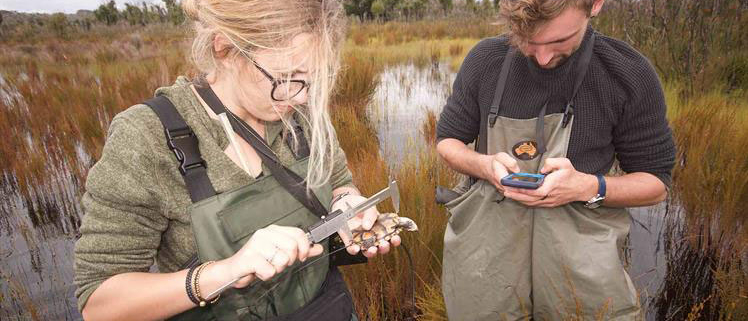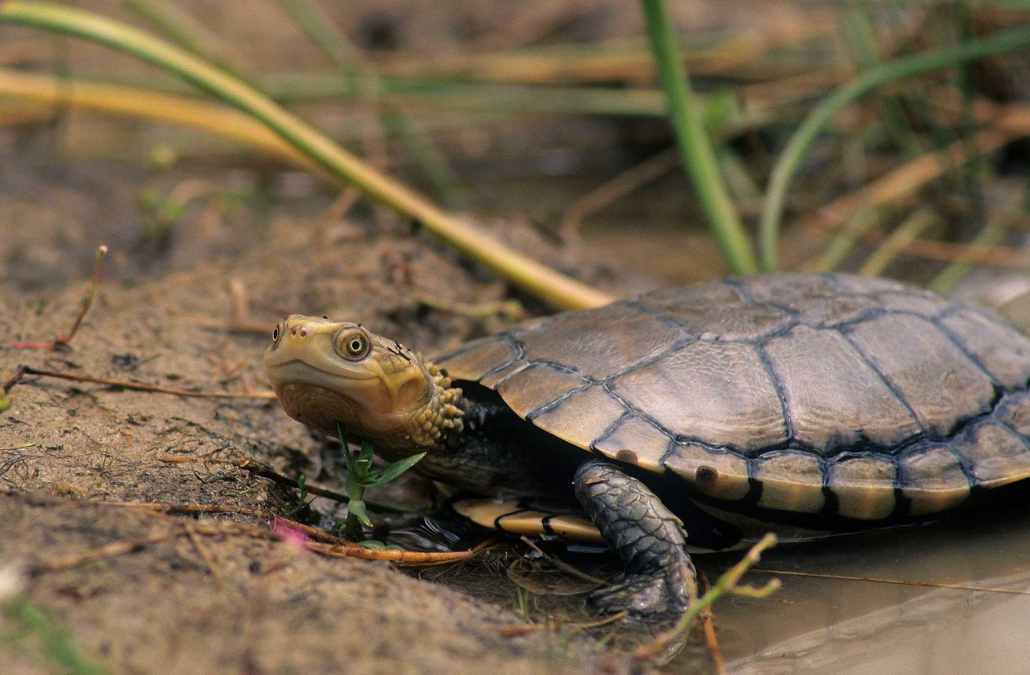
Western Swamp Tortoise Fact Sheet
What is the Western Swamp Tortoise and why is it endangered?
The Western Swamp Tortoise is one of the most critically endangered tortoises in Australia. There are less than 50 adult tortoises living in the wild, in two sites in the Swan Valley; Twin Swamps and Ellen Brook Nature Reserves. They are protected by an electric fence to keep predators out. Foxes and feral cats, which eat the tortoise, have caused a major decline in the number of tortoises. There are also native animals that eat the tortoise including ravens, goannas and birds of prey.
What does the Western Swamp Tortoise look like?
The Western Swamp Tortoise is yellow-brown or black on top (Carapace) and black, yellow and cream on the bottom (Plastron). The animals are only 15cm in length. Their feet are webbed for swimming and have claws for digging. They have a short neck and one big scale protecting the top of the head.
The only other tortoise that occurs in the Perth region is the Long Necked or Oblong Tortoise. It has a very long neck, almost the same length as the shell.
What does the Western Swamp Tortoise get up to?
The Western Swamp Tortoise is carnivorous; feeding on things such as crustaceans, insects and larvae. They only feed when the water temperature is between 14 and 28 degrees Celsius. When the swamps dry up in summer, the tortoise goes underground to escape the summer heat in a process called AESTIVATION. It comes out again when the first winter rains fill the swamps with water and remains active until summer when it becomes too hot and dry again. In November to early December it lays 1 or 2 hard shelled eggs in a shallow under ground nest and they hatch the following winter.
What is being done to help the Western Swamp Tortoise?
There is a Recovery Plan and Program for the Western Swamp Tortoise coordinated by the WA Department of Biodiversity, Conservation and Attractions. A team of representatives from the Department, University of WA, Perth Zoo, the Friends of the Western Swamp Tortoise and the World Wide Fund for Nature works to implement the recovery program. Perth Zoo has developed a highly successful captive breeding program. Juvenile tortoises bred at Perth Zoo have been reintroduced back to their natural habitat at Twin Swamps Nature Reserve over the past decade. Hatchlings have been introduced at other sites (Mogumber, Moore River, Meelup). The Friends of Western Swamp Tortoise Group are helping with recovery of the tortoise, by planting to revegetate habitat, and providing educational and promotional material and activities to raise awareness of the tortoise.
Anyone can join to learn more and help save this special reptile from extinction.
www.westernswamptortoise.com.au
westernswamptortoise@yahoo.com.au
Click here to add your own text




